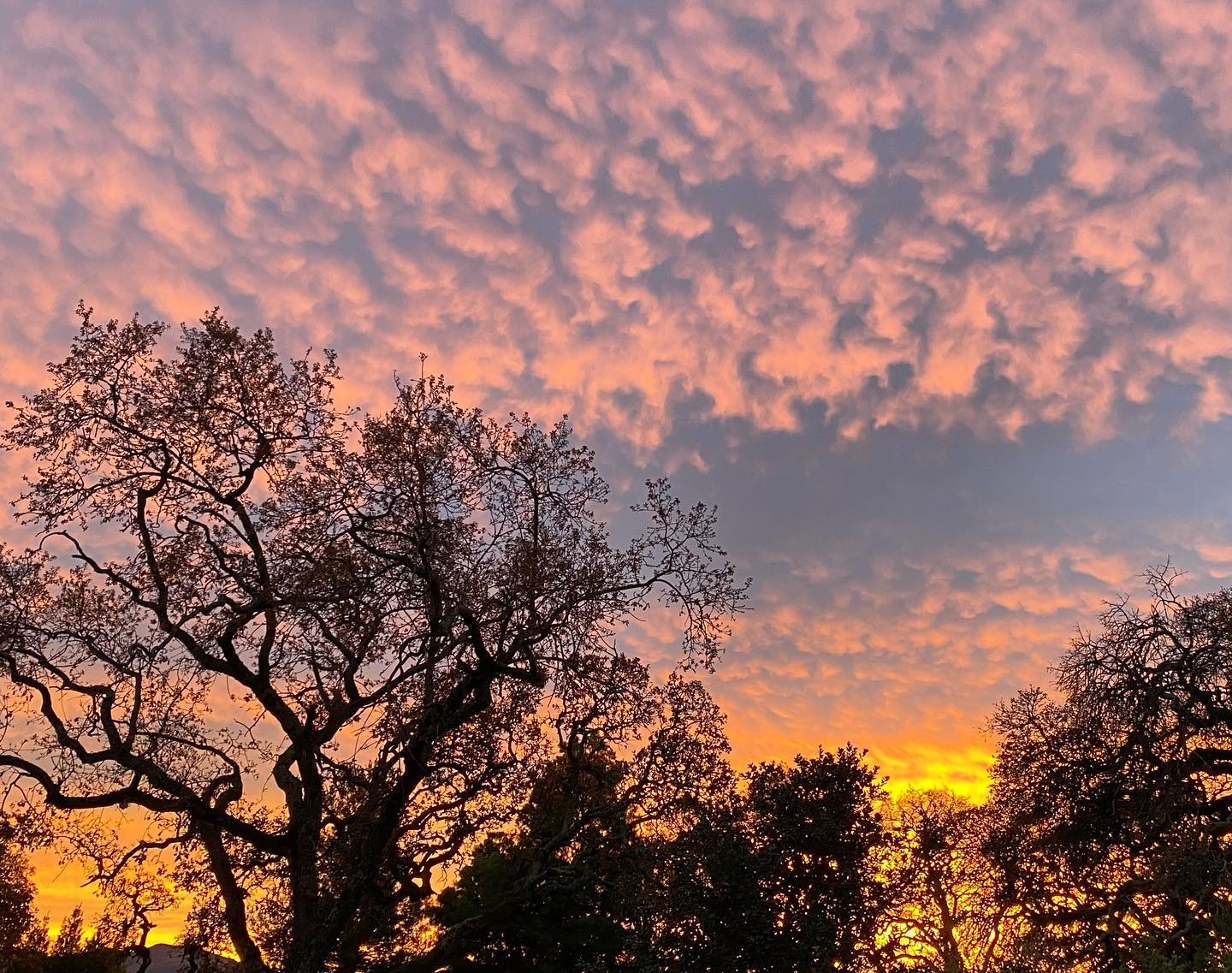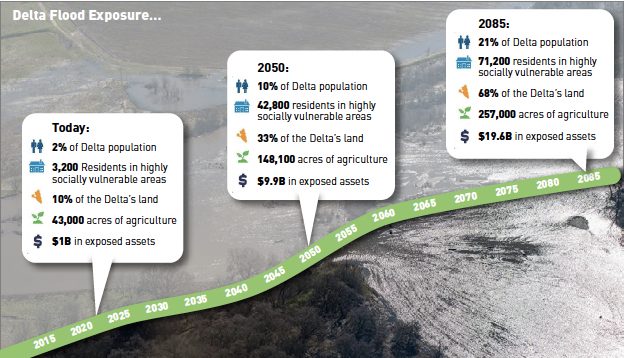
Though most don’t realize it, practically all Californians are linked to the Bay-Delta region via its triple function as a source of drinking water for some 27 million Californians, a critical water provider for the Golden State’s hefty agricultural industry, and a rich and unique ecosystem. But for those who live in the legal Delta zone – some 630,000 people – the braided weave of the Sacramento and San Joaquin Rivers and their maze of associated wetlands and levees provides a place of home, community, and recreation. And, as a recent study by the Delta Stewardship Council shows, climate change is tugging on the watery thread holding it all together.
“Two-thirds of Californians get their water from here, which is why climate change in the Delta has a large effect on statewide water availability,” says Harriet Lai Ross, assistant planning director with the Delta Stewardship Council. “There are over 750 species in the Delta, and we are part of the state’s three-trillion-dollar economy. [Our climate study] is the first time we’ve looked at all of the pieces comprehensively.”
The council’s overview reveals a grim outlook for the millions of people that are tethered to the region’s water: drought similar to that experienced in 2012-2016 will be five to seven times more likely by 2050. This will result in more severe and frequent water shortages and, as the report bluntly states, “lower reliability of Delta water exports.”

Drought’s wet twin, flooding, is also projected to significantly impact the region which acts as a hub where tides, sea-level rise, river inflows, and storm surge all combine to churn the Delta’s muddy waters. The highest-flood-risk areas identified in the study include Suisun Marsh and its mosaic of wetlands managed by private duck clubs, the city and Port of Stockton, and subsided Delta islands.
Also at risk is a range of infrastructure including the I-5 freeway, Stockton’s Dameron Hospital, historically significant sites like the Sperry Flour Mill and Isleton’s Chinese and Japanese commercial districts, and — somewhat ironically, given their role in perpetuating climate change — roughly $800 million worth of oil and gas pipelines, wells, and stations scattered around the Delta.
But some impacts touch the Delta community in ways more significant than flooded infrastructure does. “The proliferation and increase in harmful algal blooms is a huge change,” says Barbara Barrigan-Parrilla, executive director of the nonprofit Restore the Delta. “I work with youth who are saying ‘When I grew up I used to go boating, fishing, swimming, but I don’t do that anymore,’” she says pointing out that the toxic blooms, exacerbated by warmer temperatures and reduced river flow due to drought, have altered their relationship with the Estuary. “And just think – if young adults are already saying this now, what is it going to be like for their kids?”
As we’ve seen with the current pandemic, impacts are not felt equally during a disaster. The study found that almost two-thirds of residents at risk of flooding in 2050 are “socially vulnerable” — for example, those with asthma who suffer more from wildfire smoke; or families with elderly or young children who require more assistance during an evacuation. Along with minorities, renters, and low-income residents with less access to social services or air conditioning, people in these more-susceptible demographics are hit harder and take longer to recover from a flood or heat event than those in wealthier neighborhoods. The cities of Tracy and Stockton are projected to be hit particularly hard by increasing temperatures, and San Joaquin County (especially Lathrop and Stockton) by increased flooding.
After wrapping up the draft assessment period on March 16, Ross and her team were collecting public comments on the draft assessment, which will inform the next step to develop and prioritize resilience strategies for the region. According to Ross, key challenges are the usual suspects: lack of funding, and for the Delta Stewardship Council limited authority to implement the necessary changes on the ground which are the purview of a host of agencies ranging from Caltrans to PG&E to local city and county governments.
“I think we know what the answers are,” says Ross about needed climate adaptation actions. “A combination of flood-control improvements, targeted ecosystem restoration, and helping farmers continue to farm where it makes sense to, which is the heritage and primary land use of the Delta.”
Barrigan-Parrilla, however, is more frank about the need for action. “I don’t think there is room anymore to allow this to just be a report,” she says. “If this stops at a report and nothing changes it’s going to be hard to maintain the goodwill of the community – especially the younger generation.”
As if to punctuate the study’s findings, in the last few months the U.S. Bureau of Reclamation announced that agricultural water service contractors served by the Central Valley Project will initially receive only 5% of their allocations, and the State Water Project announced an initial estimate of just 10% of historical water deliveries to city and agricultural customers. Even with March rains, the most recent U.S. Drought Monitor report shows that 99% of California is “abnormally dry” and 30% is in “extreme” or “exceptional” drought. All of which starkly underlines the first sentence of the 200-page draft report: “The time to act is now.”
Delta Adapts social vulnerability index map
Prior Estuary News Stories
Top Photo: Spring sunset in the Delta. Photo: Robin Meadows